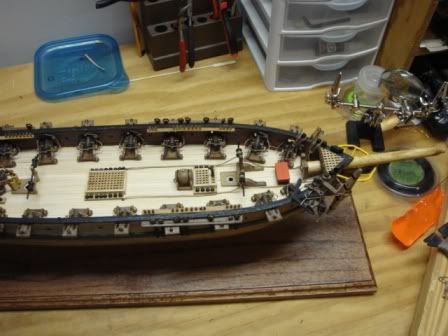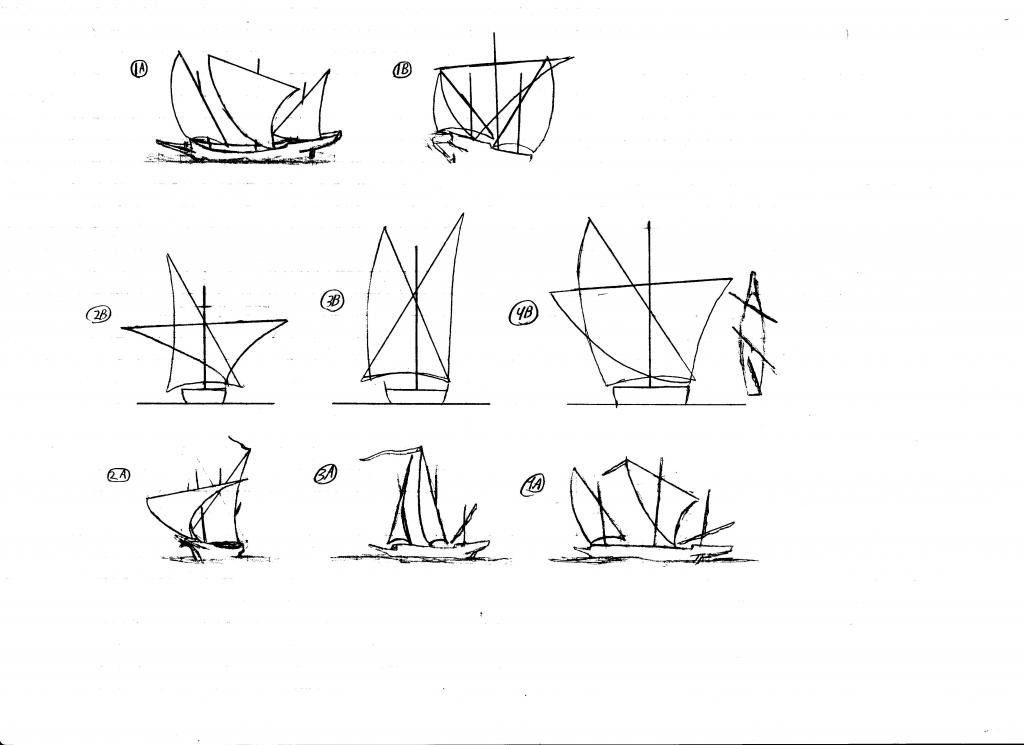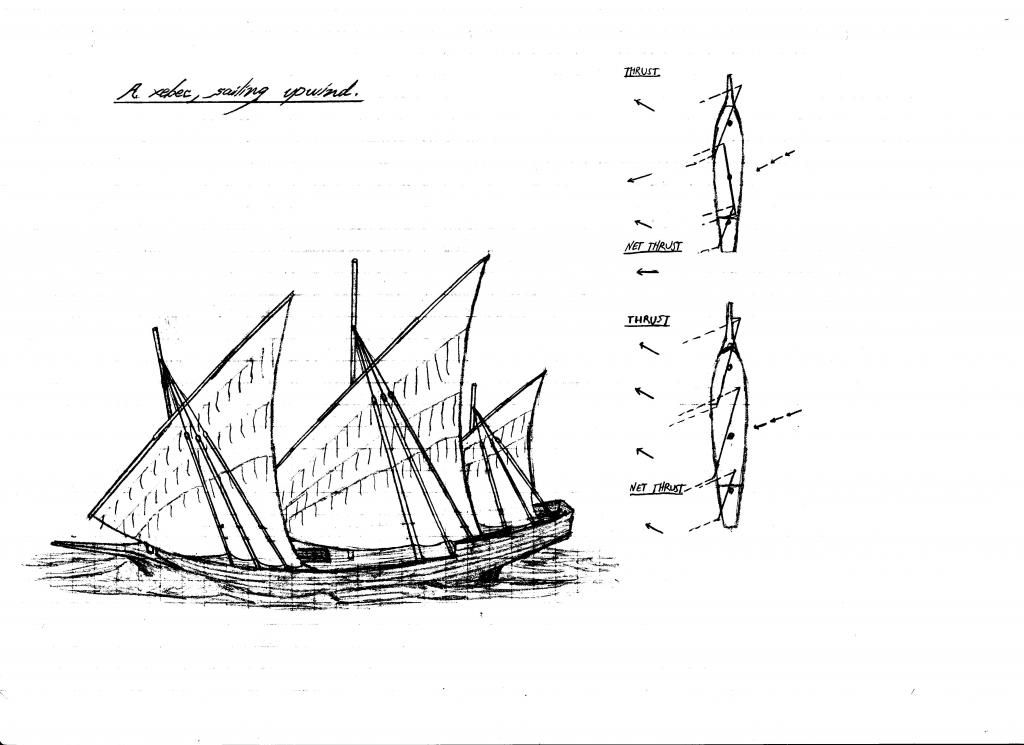First I'll start with explaining why the sails were set like that:
When running downwind, the large mains'l would inevitably blanket, or block all of the air flow, to the fores'l. Since the fores'l was the sail furthest forward, it provided the greatest advantage when running downwind. Therefore, a captain would have two options. First he could furl the mains'l, allowing air to pass through to the fores'l. This would result in a loss of all of the thrust provided by the mains'l. The second option, pictured in figures two through four, was to position each yard so as to maximize the airflow to each sail. This allowed both the fore and mains'l to provide thrust, and so provided more speed than the first method.
This method is actually identical in principle to the asymmetrical setting of studdingsails on square-rigged vessels, and the proper setting of sails on a square rigger in general.
Figure one illustrates the theoretical advantages of using a similar system to option two discussed above, in which the xebec is broad-reaching. This minimizes blanketing. However, if the xebec were to attempt to sail close-hulled with its sails trimmed as pictured, the fores'l would be nearly useless.
Next, the problem I have with the way the sails seem to be working ingame:
In this illustration, you can see a xebec close-reaching. The diagrams to the right indicate the approximate thrust of each sail. With the sails set apparently on opposite tacks, as seen in the uppermost diagram, the resulting forward net force is very close to zero. Keep in mind that these are broad approximations. Having the sails trimmed like that accomplish exactly the same thing as backing the mainmast on a full rigged ship- the vessel is hove to, with little forward movement.
So, after all is said and done:
Yes, having the sails set like that is accurate much of the time. The problem arises when you keep them set like that all of the time, which prevents the vessel from sailing upwind. I equate setting sails like that on a lateen vessel to the use of stuns'ls on a ship. When I said that that was outside the scope of the game, I meant that it was outside the scope of the game in the same way as stuns'ls: They couldn't be used in all conditions, and the game won't allow us to to pick and choose different settings. To that extent, we have to make due with only one sail scheme that will work in all conditions.



















